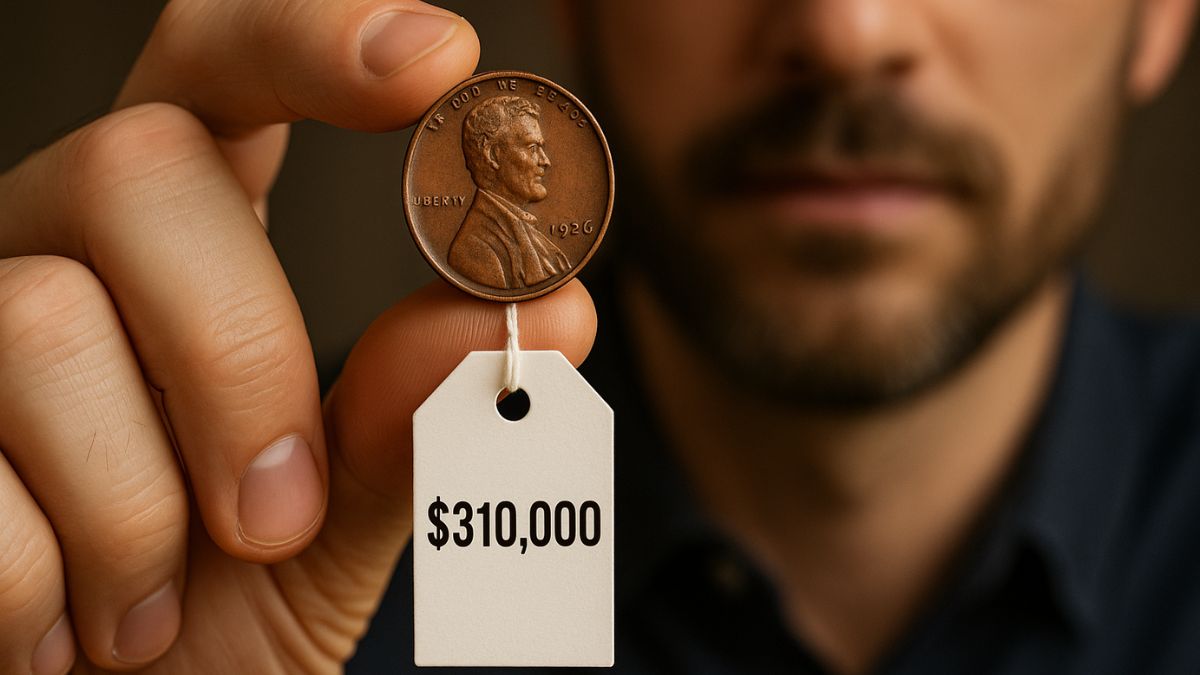Imagine reaching into your pocket and pulling out a penny—only to discover it’s worth $310,000. This isn’t a fantasy; it’s the astonishing reality for a select few who have stumbled upon the rare 1943 Copper Lincoln Wheat Penny.
Despite being over 80 years old, some of these valuable coins are still in circulation, waiting to be found by an unsuspecting individual.
The Lincoln Wheat Penny: A Brief Overview
The Lincoln Wheat Penny, minted from 1909 to 1958, features President Abraham Lincoln on the obverse and two wheat stalks on the reverse.
Designed by Victor David Brenner, it was the first U.S. coin to depict a real person. While most of these pennies are common, certain rare variants have become highly sought after by collectors.
The 1943 Copper Penny: A Wartime Rarity
During World War II, the U.S. Mint switched from copper to zinc-coated steel for penny production to conserve copper for the war effort.
However, a few pennies were mistakenly struck on leftover copper planchets, resulting in the rare 1943 Copper Penny. These error coins are among the most coveted in numismatic circles.
Why Is the 1943 Copper Penny So Valuable?
Several factors contribute to the high value of the 1943 Copper Penny:
- Rarity: Only an estimated 20 to 40 of these coins exist.
- Historical Significance: They represent a unique error during a significant period in U.S. history.
- Collector Demand: Their scarcity and story make them highly desirable among collectors.
- Condition: Coins in Mint State (MS) condition fetch higher prices.
Notable Auction Sales
The 1943 Copper Penny has fetched impressive sums at auctions:
| Year | Mint Mark | Grade | Sale Price |
|---|---|---|---|
| 2010 | D | MS67 | $1.7 million |
| 2025 | D | MS64 | $310,000 |
| 2025 | P | MS63 | $288,000 |
These figures highlight the coin’s significant value and the importance of its condition and mint mark.
How to Identify a 1943 Copper Penny
To determine if you have a 1943 Copper Penny:
- Check the Date: Ensure the coin is dated 1943.
- Test with a Magnet: Copper is non-magnetic; if the coin sticks to a magnet, it’s likely steel.
- Examine the Color: Copper pennies have a reddish-brown hue, unlike the silver-gray of steel pennies.
- Look for Mint Marks: A “D” indicates Denver, “S” for San Francisco, and no mark for Philadelphia.
Other Valuable Lincoln Wheat Pennies
While the 1943 Copper Penny is the most famous, other Lincoln Wheat Pennies are also valuable:
| Year | Description | Estimated Value |
|---|---|---|
| 1909-S VDB | First year of issue with designer’s initials | Up to $100,000 |
| 1914-D | Low mintage from Denver Mint | Up to $15,000 |
| 1922 No D | Missing mint mark error | Up to $20,000 |
| 1955 Doubled Die | Prominent doubling of date and lettering | Up to $125,000 |
| 1944 Steel | Error coin struck on steel planchet | Up to $85,000 |
Tips for Collectors and Enthusiasts
- Inspect Your Change: Rare coins can still be found in circulation.
- Use a Magnet: Quickly identify steel vs. copper pennies.
- Consult Experts: If you suspect you have a valuable coin, seek appraisal from a reputable coin dealer or grading service.
- Avoid Cleaning Coins: Cleaning can reduce a coin’s value.
The allure of discovering a $310,000 penny in your pocket is real. The 1943 Copper Lincoln Wheat Penny stands as a testament to how historical anomalies can translate into modern-day treasures.
By staying informed and vigilant, you might just uncover a piece of history—and a significant financial windfall—in your everyday change.
FAQs
How many 1943 Copper Pennies are known to exist?
A1: It’s estimated that between 20 and 40 of these coins exist, making them extremely rare and valuable.
Why were some 1943 pennies made of copper instead of steel?
During the transition to steel pennies in 1943, a few copper planchets were mistakenly left in the minting machines, resulting in the rare copper versions.
How can I verify if my 1943 penny is made of copper?
Use a magnet; copper is non-magnetic, so if the coin doesn’t stick, it might be copper. Additionally, consult a professional coin appraiser for authentication.
